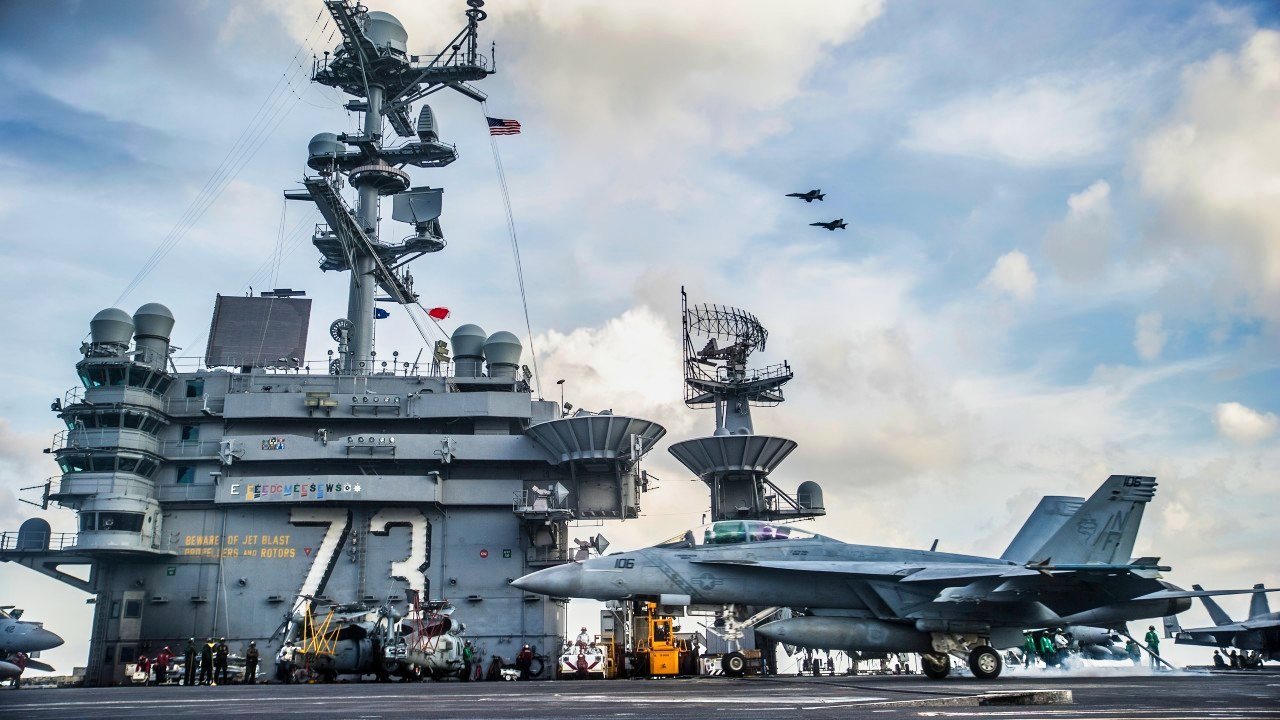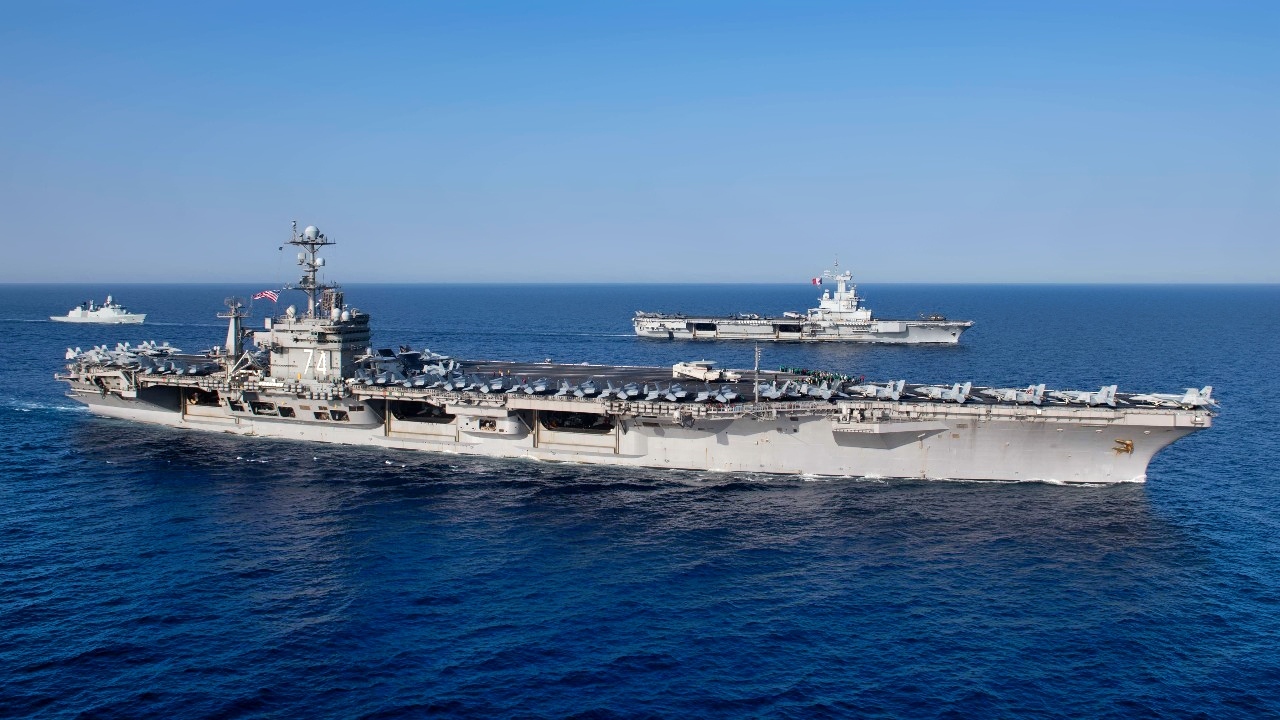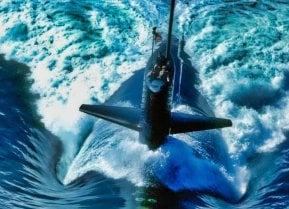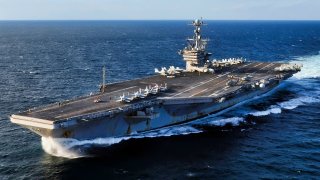This Aircraft Carrier Was Out of Action for 2,117 Days And Is Headed Towards China
The USS George Washington (CVN-73), a Nimitz-class nuclear-powered supercarrier, recently completed an extensive Refueling and Complex Overhaul (RCOH) in May 2023, which extended nearly two years beyond schedule.
What You Need to Know: The USS George Washington (CVN-73), a Nimitz-class nuclear-powered supercarrier, recently completed an extensive Refueling and Complex Overhaul (RCOH) in May 2023, which extended nearly two years beyond schedule.

-After final pre-deployment certifications, the carrier departed Norfolk in April and arrived in San Diego in July. It is now en route to Yokosuka, Japan, to become the U.S. Navy’s sole forward-deployed carrier, succeeding the USS Ronald Reagan (CVN-76).
-As part of a strategic "Hull Swap," personnel and equipment were transferred to enhance mission readiness. The George Washington’s primary role is to monitor and deter Chinese naval expansion, reinforcing America’s commitment to regional stability and interoperability with allied navies.
USS George Washington: The Navy’s Sole Forward-Deployed Supercarrier Heads to Japan
The United States Navy has attempted to put the troubles with the Nimitz-class nuclear-powered supercarrier USS George Washington (CVN-73) in the rearview mirror, while the crew is likely more than happy to be back on the open seas again. The carrier underwent a lengthy Refueling and Complex Overhaul (RCOH) that was only completed in May 2023, lasting 2,117 days, nearly two years longer than expected, and nearly as long as the original construction took.
With the completion of pre-deployment certifications that took almost another year, USS George Washington finally departed Norfolk, Virginia in April and arrived in San Diego this past July. After much ado, CVN-73 is finally traveling to Yokosuka, Japan, where she will become the U.S. Navy's only forward-deployed carrier, taking over the duties of her sister flattop USS Ronald Reagan (CVN-76). The two vessels recently concluded a "Hull Swap," which involved moving personnel, equipment, and even classified materials between the two ships.
The vessels clear mission: watch over and deter any actions from China and its growing naval might
Forward Deployed
This will be the second time the Nimitz-class warship has served as a "Forward-Deployed Naval Forces-Japan" carrier – and it was actually the first nuclear-powered flattop to serve in that role before being relieved by CVN-76.
"USS George Washington departed San Diego to begin the final phase of its redeployment to Japan, where it will once again serve as the Navy's forward-deployed aircraft carrier," said Rear Adm. Greg Newkirk, commander of Carrier Strike Group 5.
"It will take up station alongside the always-ready forces postured in the area of responsibility. George Washington, with all its capabilities, represents America's commitment to stability in the region where it will sail and fly with our partner navies as we strive to move from interoperability to true interchangeability," Adm. Newkirk added.
Great Aircraft Carrier Named For Great General
Despite his prominent role in American history, only four ships have been named in honor of George Washington, the hero of the Revolutionary War and the country's first president. These have included a U.S. Navy frigate that saw service in the undeclared or "Quasi-War" with France; and the second began her life as a German ocean liner that sought refuge in New York at the outbreak of the First World War, only to be taken over by the United States military and used as a troop transport.
The third was the lead vessel of a class of five nuclear-powered ballistic missile submarines that were built between 1958 and 1961. Those boats served as the U.S. Navy's main contribution to the nuclear deterrent force through the late 1980s.
However, it is the fourth vessel to bear the name that truly serves to honor General and later President George Washington – the sixth Nimitz-class nuclear -owered aircraft carrier. CVN-73 was laid down in August 1986 and was officially commissioned into the United States Navy on July 4, 1992.
Lafayette, we are here!
It was fitting that it was from CVN-73 that then-President Bill Clinton and First Lady Hillary Clinton led an entourage of the nation's leaders on June 5, 1994, to commemorate the 50th anniversary of the D-Day landings in Normandy, France. Off the coast of Normandy, President Clinton cast a wreath onto the waters of the English Channel in honor of men lost at sea during the landings.
Later that year, the Nimitz-class aircraft carrier, which could carry up to 90 aircraft, was dispatched to the Persian Gulf, where she took part in Operation Vigilant Warrior to protect Kuwait from a second invasion by Iraq. Joined by the amphibious assault ship USS Tripoli (LPH-10), along with 2,000 Marines of the 15th Marine Expeditionary Unit, the arrival of the carrier convinced Iraqi leader Saddam Hussein to withdraw his Republican Guard Forces. In November of 1994 Iraq officially recognized an independent Kuwait.
The carrier spent the remainder of the 1990s on deployments to the Mediterranean Sea and Persian Gulf. Following the September 11 terrorist attacks on New York City and the Pentagon, USS George Washington, along with the carriers USS John F. Kennedy (CV-67) and USS John C. Stennis (CVN-74), was deployed to protect the United States from potential attacks. CVN-73 was stationed as a protector of the Big Apple and the East Coast.

During the subsequent sixth deployment, which began in February 2004, CVN-73 traveled to the Gulf of Aden and conducted operations in the Persian Gulf. In December 2005, it was announced by the United States Navy that USS George Washington would replace the conventional-powered USS Kitty Hawk (CV-63) as the forward-deployed carrier at the U.S. Yokosuka Naval Base in Japan. As a result, USS George Washington became the first nuclear-powered surface warship permanently stationed outside the continental United States.
George Washington was later one of several U.S. Navy vessels that also participated in disaster relief after the 2011 T hoku earthquake and tsunami. The flattop departed Japan in 2015 following a 10-day turnover period with the newer USS Ronald Reagan (CVN-76). Before beginning her mid-life RCOH, George Washington also provided support to Haiti following October 2016's Hurricane Matthew.
CVN-73 is now heading back to Japan.
Author Experience and Expertise: Peter Suciu
Peter Suciu is a Michigan-based writer. He has contributed to more than four dozen magazines, newspapers, and websites with over 3,200 published pieces over a twenty-year career in journalism. He regularly writes about military hardware, firearms history, cybersecurity, politics, and international affairs. Peter is also a Contributing Writer for Forbes and Clearance Jobs. You can follow him on Twitter: @PeterSuciu. You can email the author: [email protected].
Image Credit: Creative Commons and/or Shutterstock.


